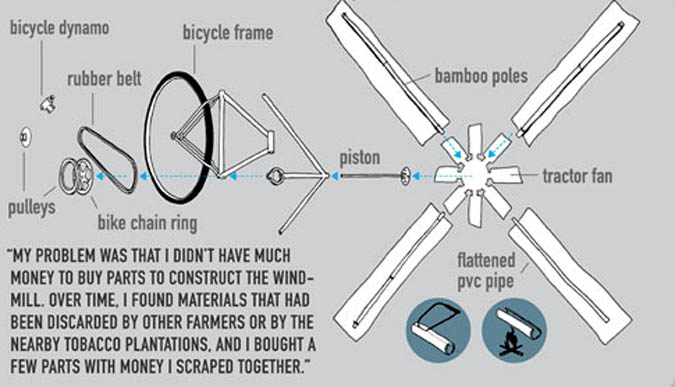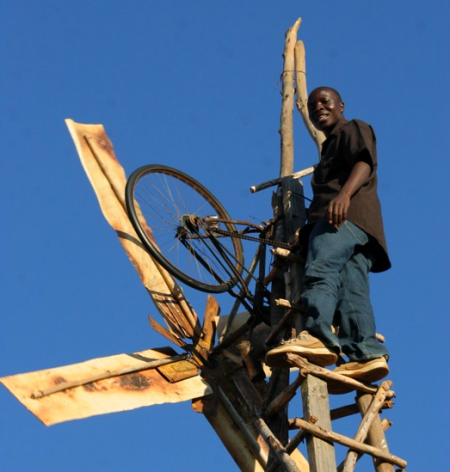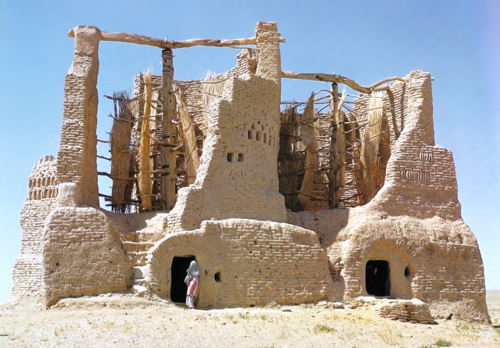Throughout history there have been many times when people have taken it upon themselves to harness the power of nature (usually wind and river) in order to pump water or run millstones. By doing so with the resources at hand, the works are crafted painstakingly over time with care and attention to detail. They are organic. They are beautiful. They are no less than works of art.
Most recently we have the example of William Kamkwamba, a young man from the central Malawian village of Masitala. Alone and with the rest of his friends and family wondering what it was he was up to, he fashioned a 12 watt windmill out of scraps and spare parts that were lying around his village.

It’s quite a stunning and beautiful object.


William Kamkwamba has rightly become an overnight sensation and his amazing story will certainly inspire action. The visual impact that his creations have on people and the emotions that they stir cannot be discounted as a powerful part of that story. We need to bring water and electricity to every village in the world, for with electricity and water provided continuously by nature, a people can become free and prosper. We’d like to see the outcome of the Land Art Generator Initiative Design Competition produce some examples of designs for the landscape that with proper funding could be constructed anywhere in the world. To be placed in villages, they should be beautiful and inspiring to gaze upon.
Some examples of other natural energy projects that have been constructed throughout history survive today. Some are still functioning. All of them are exquisite by the nature of their having been created with materials at-hand and of-the-earth.

Architecture of the Islamic World, Its History and Social Meaning; Page 188; Edited by George Michell; 1978 Thames & Hudson Ltd, London
This one is a wind mill in Sistan, Iran used to grind grains. It is one in a series of similar structures with openings toward the prevailing wind direction. The vertical vanes comprised of reeds turn the axle that is connected to the millstones in the rooms below.

